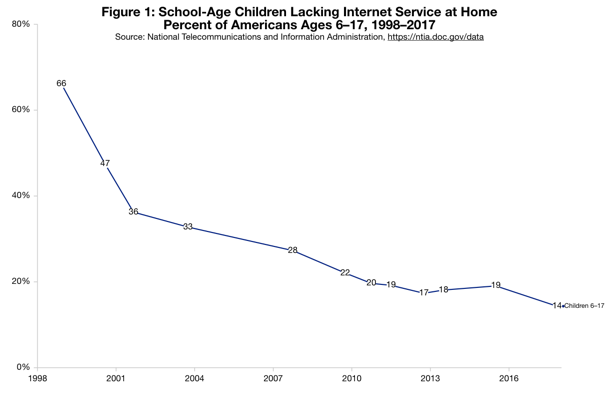U.S.: Digital Divide Among School-Age Children Narrows, but Millions Still Lack Internet Connections
New from the National Telecommunications and Information Administration:
America continues to make significant strides in reducing the digital divide among school-age children, according to NTIA’s November 2017 Internet Use Survey. In 2017, 14 percent of the U.S. population between ages 6 and 17 lived in homes with no Internet service, down from 19 percent in 2015. These are encouraging numbers that echo our previous report on the narrowing digital divide.
[Clip]
Still, significant challenges remain, especially for the approximately 7 million school-age children that lived in households without home Internet service in 2017. These children were also less likely than their peers to use the Internet from other locations.
[Clip]
There are also disparities in children’s access to the Internet at home based on factors like race and population density. For example, while 88 percent of White and Asian American school-age children lived in households with home Internet service, only 81 percent of African American and 83 percent of Hispanic children have access to this vital resource at home. Among school-age children in urban households, 86 percent had Internet service at home, compared with 82 percent of their rural counterparts.
Read the Complete Analysis, View Two Additional Charts
Filed under: News
About Gary Price
Gary Price (gprice@gmail.com) is a librarian, writer, consultant, and frequent conference speaker based in the Washington D.C. metro area. He earned his MLIS degree from Wayne State University in Detroit. Price has won several awards including the SLA Innovations in Technology Award and Alumnus of the Year from the Wayne St. University Library and Information Science Program. From 2006-2009 he was Director of Online Information Services at Ask.com.



